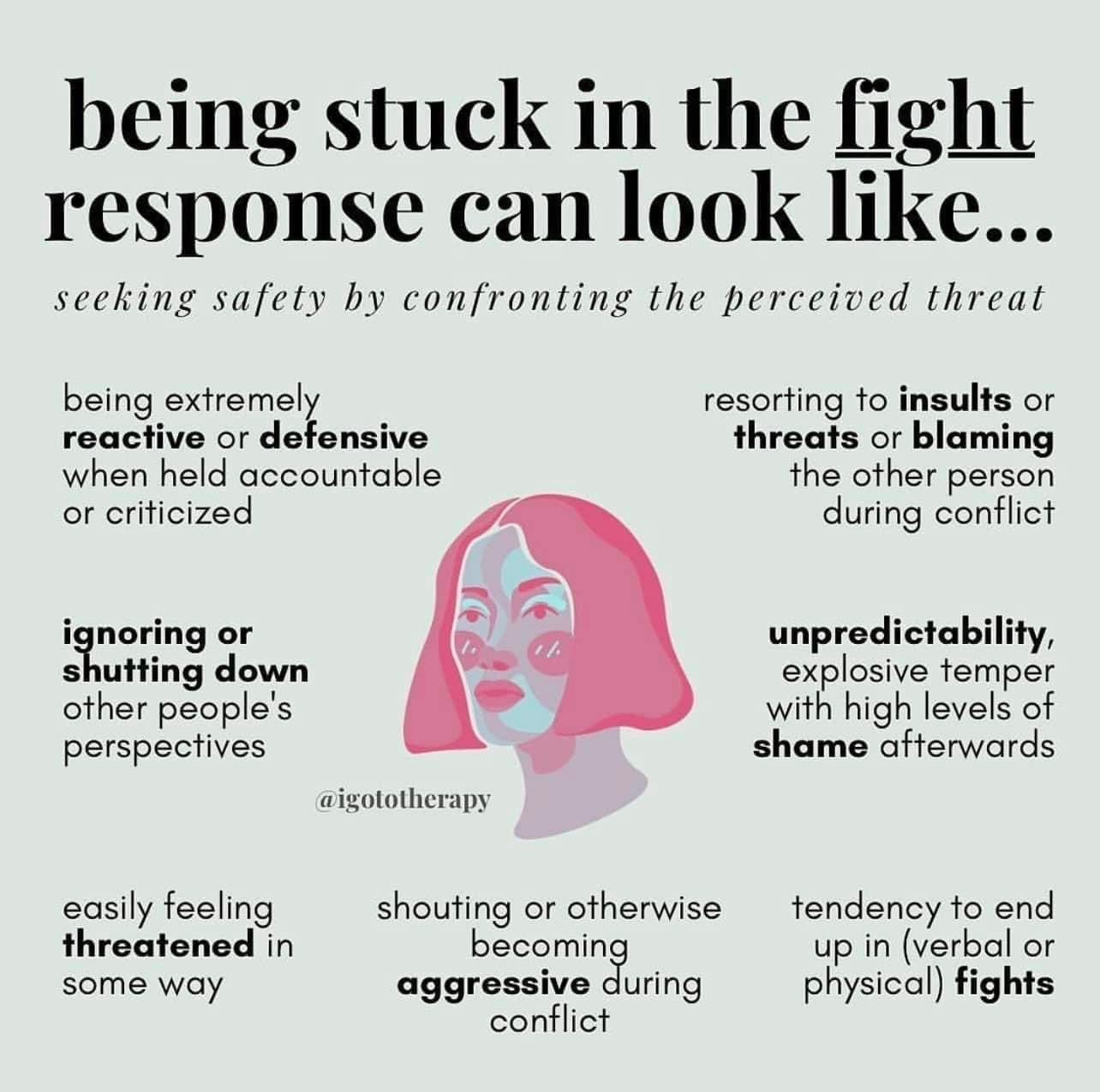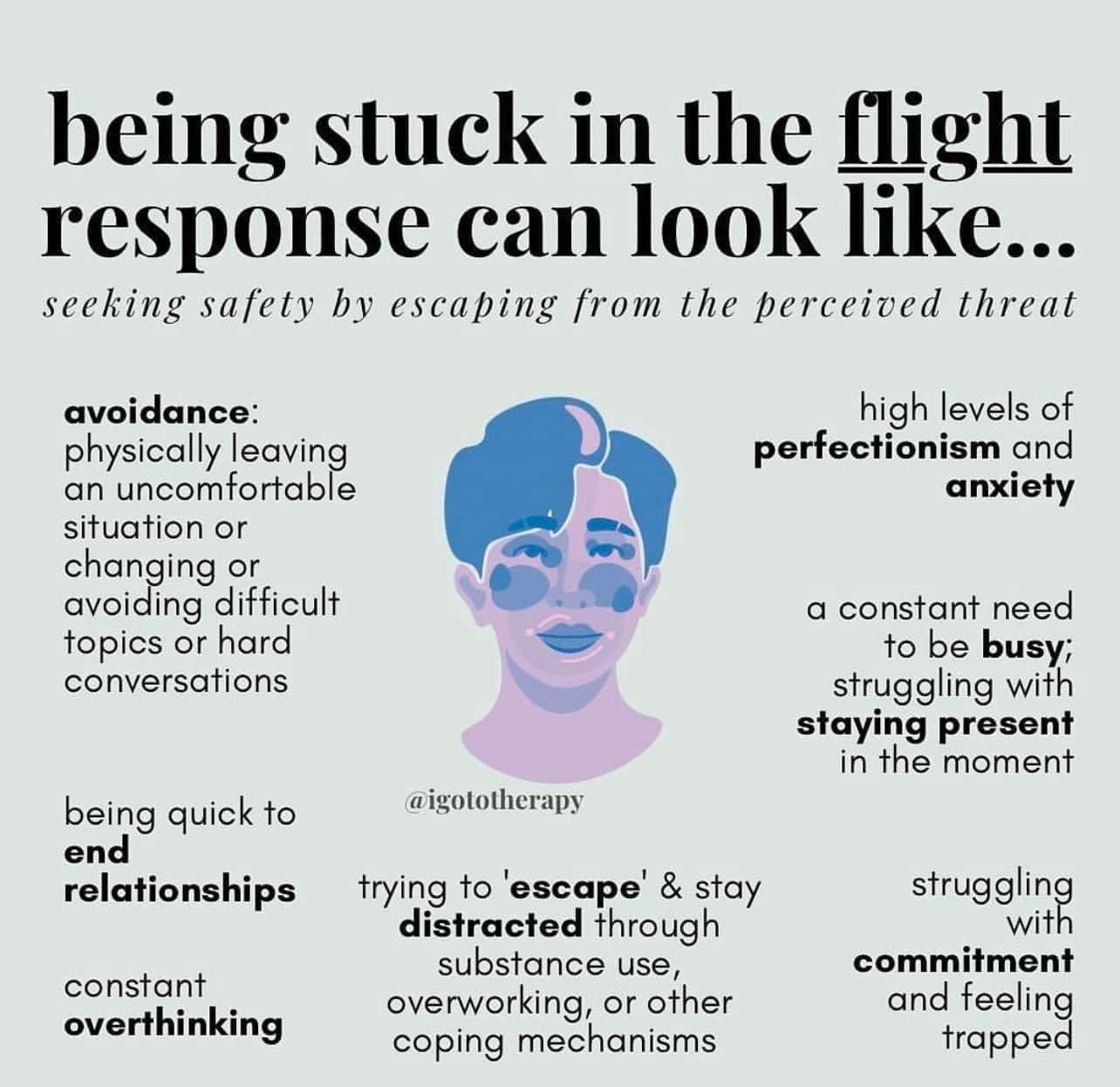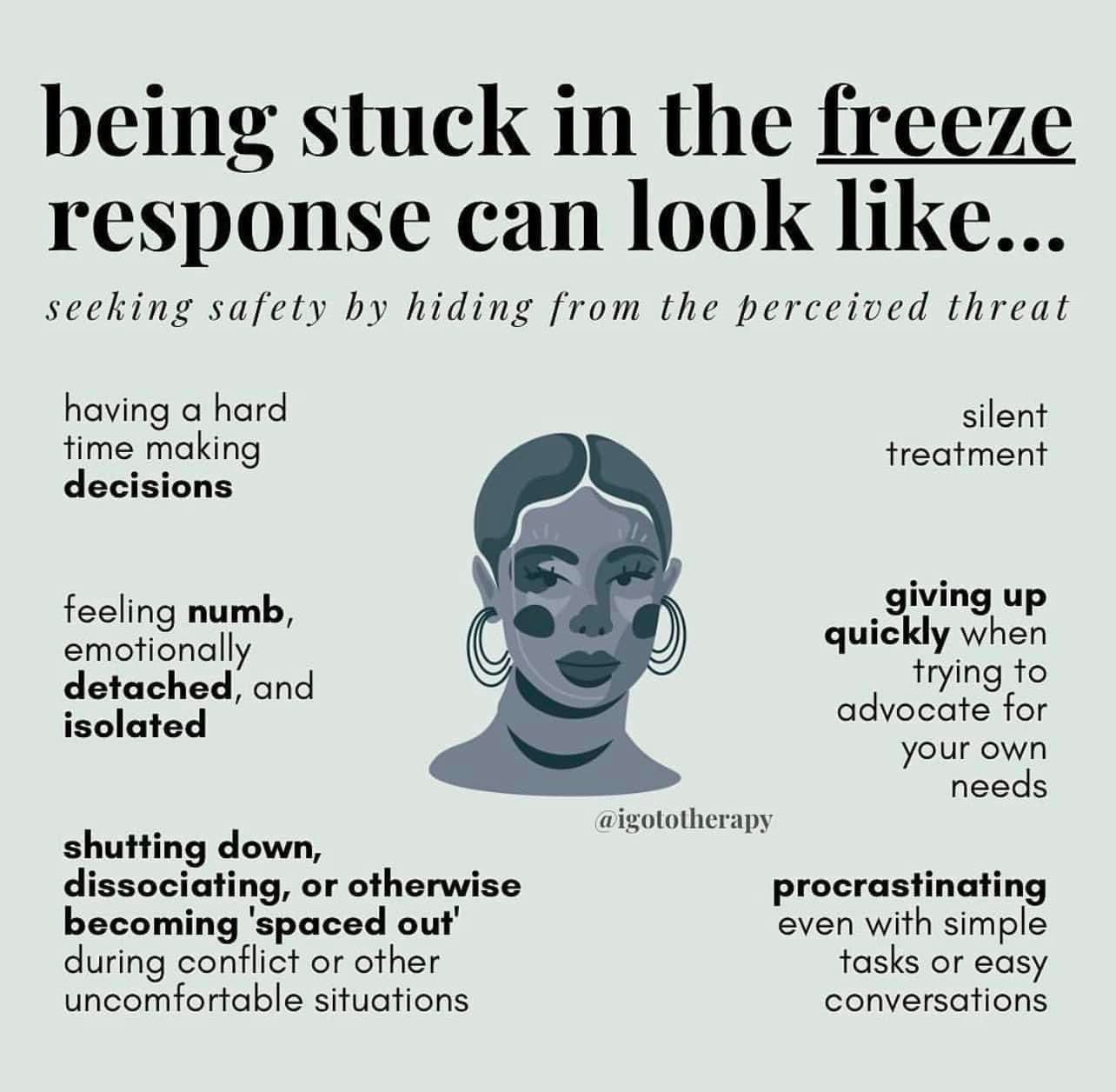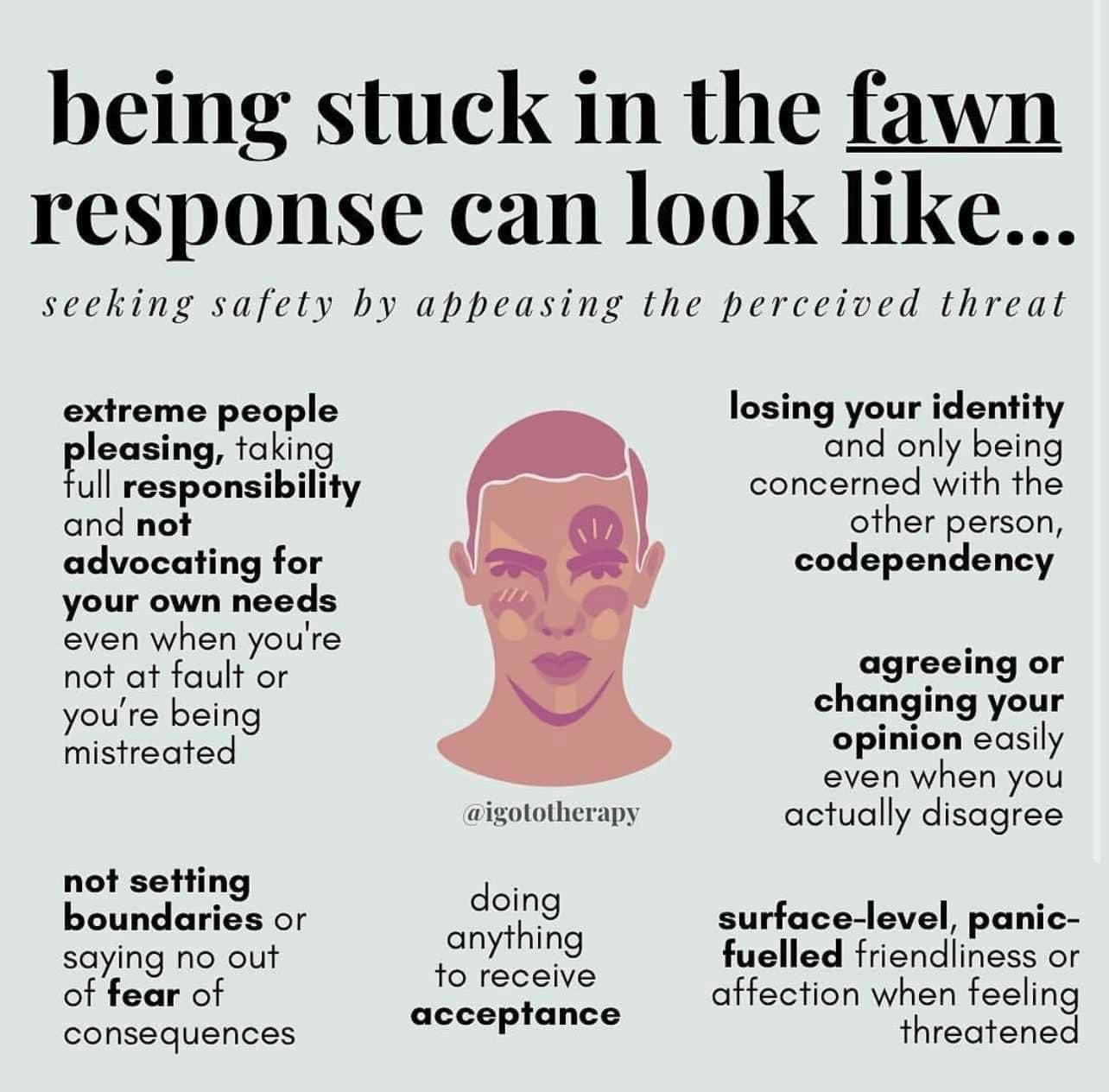I’ve experienced a bit of all of these.
I’ve experienced all of these as well. One facet of these models that attempt to classify and organize behaviour (that IMO is not addressed often enough as part of these models) is that they are ‘context driven’. It seems to me that we are all capable of responding in each of these ways depending on the context, the circumstances we are in at the moment. That being said I’m guessing we each probably have a reflex response that gets used more than the others because we find ourselves more often in circumstances where that response is the ‘go to’ one so to speak. That’s my observation at least.
Also, for what it’s worth, I see ‘fawn’ as a subset of ‘fight’ rather than it’s own category…and here’s why. I realize that this way of considering comes from behaioual technology NLP and is based on directionalization. I don’t recall Fight, Flight, Freeze, Fawn as part of the NLP model however…it was modelled in a different fashion.
Fight is a ‘moving toward’ behaviour—it engages—aggressive
Flight is a ‘moving away’ behaviour—it disengages—regressive
Freeze is a ‘no movement’ behaviour—it neither engages nor disengages—remains static
Fawn is a ‘moving toward’ behaviour—it engages, not as aggressively as ‘fight’ but still there is active engagement…it’s not disengaging like ‘flight’ nor is it ‘no movement’ like ‘freeze’…it’s active and ‘moving toward’ in nature
Does seeing ‘fawn’ in this way make any practical difference?..probably not…yet this is the sort of thing my brain likes to do. ![]()
Reminds me of the quote, “Keep your friends close and your enemies closer.” Fawn, haha, moving towards the threat with a “charm” and “disarming” behavior.
Moving towards and moving away I like here because they are energetic and in some ways easier to relate to than “fight or flight”. Also fits with Right Distance Right Depth as a strategy for primitive brain balancing.



